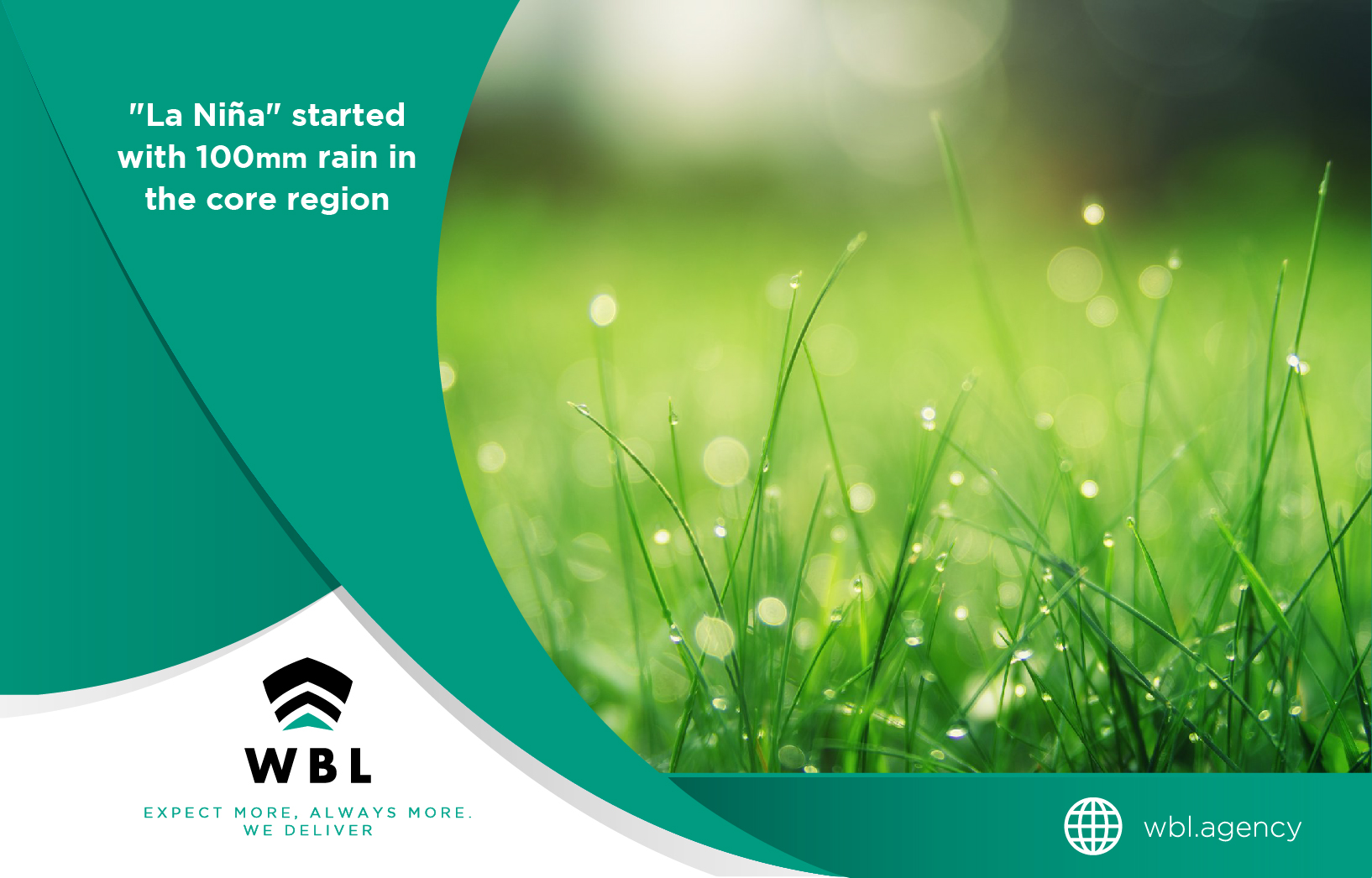“La Niña” started and it rained 100 mm in the core region
With last weekend rains, the core region accumulated 100 mm as monthly averages. Much of the Pampean region and the coast received significant rains in the event from October 24th to 26th.
Paradoxically, in the month where the Pacific intensified its cooling, “La Niña” has begun, and one of the most important droughts of the last 10 years has broken in the center and north of the country. After six months without significant rains, the events that have taken place for the last two weekends significantly change the water reserves in the soil at the beginning of the heavy season in Argentina.
Why did the rains return?
When referred to the weather forecast nothing is ever black or white. Locking Argentina’s climatic complexity into the Niña or Niño dichotomy just do not work. Once again, the answer to the return of the water is in the Atlantic Ocean. Alfredo Elorriaga, a historical advisor from the Rosario Stock Exchange and an historical scholar of the behavior of this ocean explains the reason for these October rains. “Warming is being sustained in the Atlantic Ocean along the southern coast of South America. This was the great sign that sustained the break of the lack of water in October. The warming observed in the south of Brazil is very important for Argentina because it implies that humid air will continue to enter from the north. In any case, this change in circulation should not be confused with a change in trend within the La Niña episode. These rains are an effective operation of regional phenomena that can be repeated, but within the framework that the forcing of the Pacific imposes on the campaign”.

The core region started in red but ends the month with a highly anticipated change.
Very widespread rains left between 50 and 60 mm this weekend between October 24th and 25th. From the center of the north of Buenos Aires, a language can be distinguished that ascends to the South east of Santa Fe province with more than 60 mm. Rosario who registered 72.4 mm, Maggiolo with 72 mm, Álvarez with 70 mm, and Rojas with 68 mm, among others. Another big focus of the storm was at Córdoba, Hernando, which obtained the maximum record of the event with 100 mm. It is followed by Bengolea that in a few kilometers accumulated 80 mm. The town that received the fewest millimeters was General Villegas in the extreme west of the north of Buenos Aires; it only received 31.8mm.
The historical average of the last 30 years shows rains between 90 and 120 mm for October. With this second consecutive event of rains, the region reached, in less than 10 days, 90% of the historical rains in October.
What did the past days storm leave in Argentina?
The rains that developed between October 24th and 26th left 80% of Buenos Aires from 30 mm to 75 mm. The center and north center of Buenos Aires are the areas that received the most water. Saladillo was once again the epicenter of the storm with 81 mm. So far this month this city has accumulated 230 mm. With these rains, there are excesses of water in 45% of the province.
In Santa Fe, the storm once again privileged the south of the province with records of 45mm to 60 mm. The center received rainfall around 30 to 45 mm and the north between 15 to 30 mm. Rosario received the highest accumulated: 72 mm.
In the province of Cordoba, the storm this time left the north and the north west in particular. A good part of the center and south of the province received rains above 30 mm. The center of the Cordoba stands out with the 100 mm that Hernando received, which in the last seven days accumulated 155 mm.
70% of the province of Entre Ríos received rains above 30 mm with a marked increasing gradient towards the southeast. In La Pampa, the center reached rains of more than 15 mm.
But the most amount of water was received by the coast. Mercedes, in Corrientes, has received the most amount of water these recent days. Between the days of analysis, from 24 mm to 26 mm, it added 100 mm. But if added rains of Thursday 22 and Friday 23, the total of those four days amounts to 220 mm.
What to expect in the short term?
October is not over yet and promises more rains. For next Wednesday 28th and Thursday 29th, there is a new instability that may continue to add a few more millimeters in the center of the Pampean region. The designated area is the center and north of Buenos Aires, south of Santa Fe, and south of Córdoba.
WBL Shipping Agency
For more news follow us on LinkedIn
